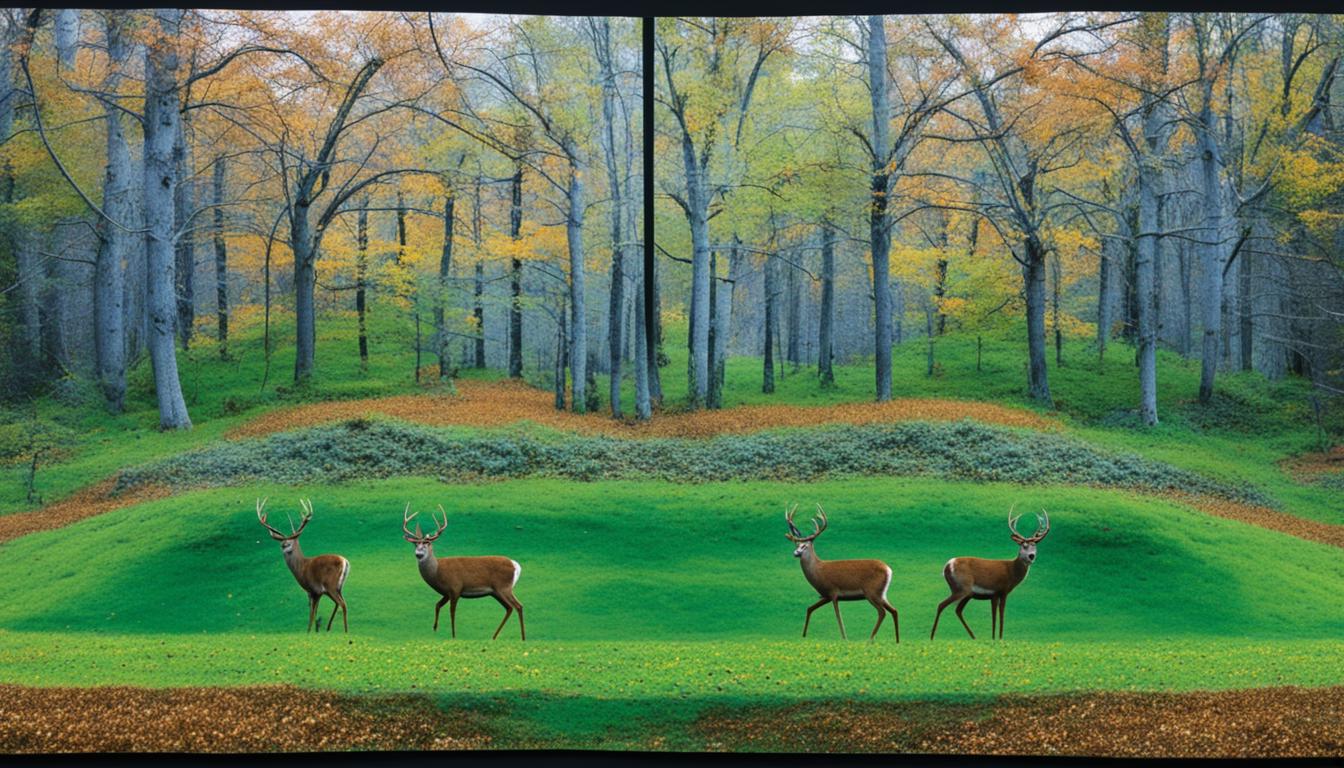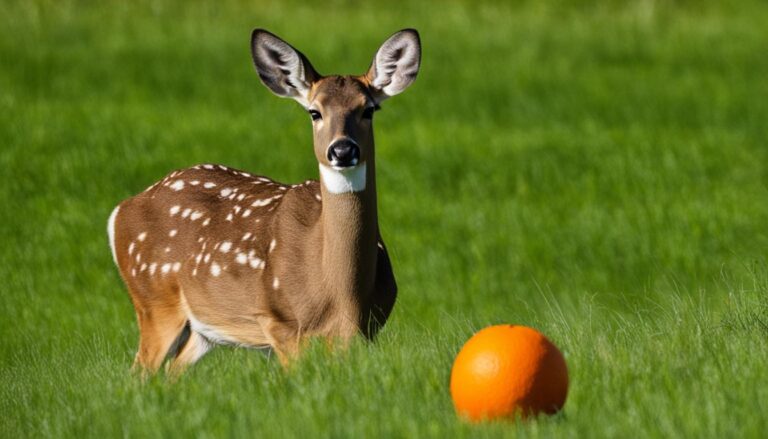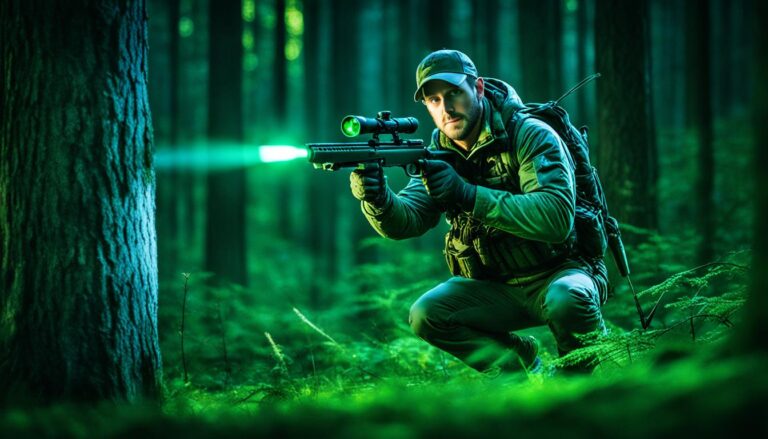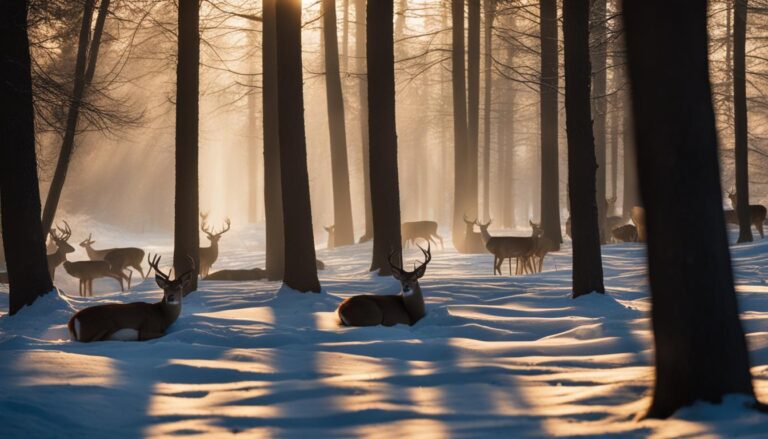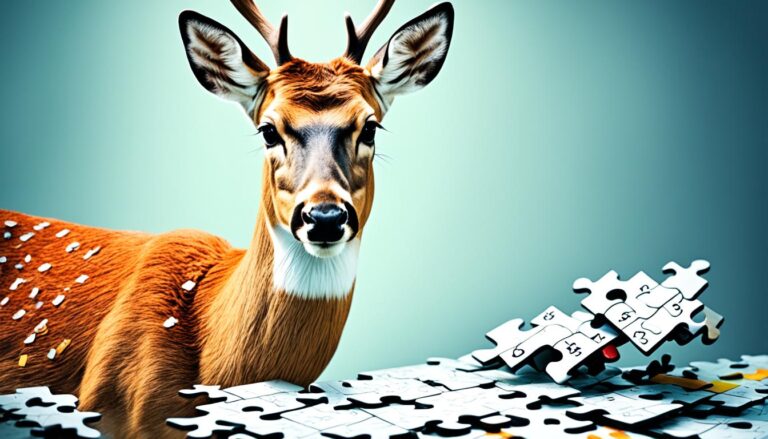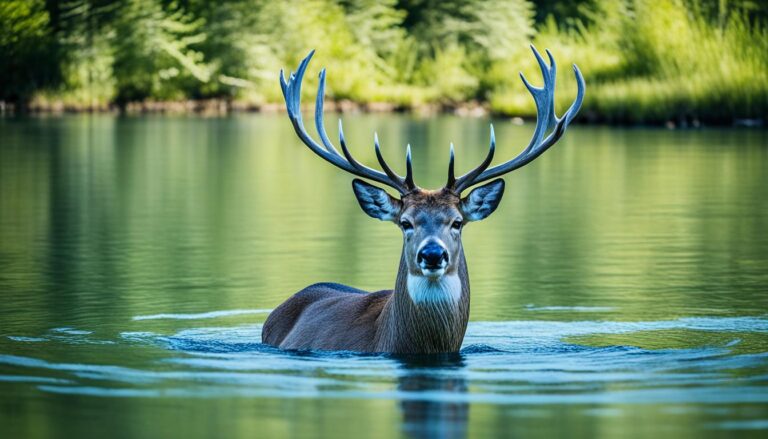Are Deer Color Blind? Unveiling the Myth!
Deer vision has long been a subject of fascination among wildlife biologists. One common question that arises is whether deer are color blind. Let’s explore the truth behind this myth and shed light on the fascinating world of deer vision.
Content Highlights
ToggleKey Takeaways:
- Deer have “dichromatic” vision, perceiving colors differently than humans.
- They lack the cone that allows humans to see longer wavelengths, such as red and orange.
- Deer have reduced visual acuity compared to humans due to a lower concentration of cone cells in their retinas.
- Their larger pupils and reflective eye structure enhance their night vision.
- Deer possess a combination of visual, olfactory, and auditory capabilities to navigate their environment and detect threats.
Deer Visual Capabilities and Sensory Abilities
The research on deer vision has provided insightful discoveries into their visual capabilities and sensory abilities. While humans have the advantage of perceiving a wide range of colors, deer have a limited ability to distinguish between certain hues, particularly red and green. This is due to the composition of their retinas and the absence of a cone that allows humans to see longer wavelengths.
Deer possess better visual acuity along a horizontal swath in the middle of their field of vision, while the top and bottom thirds appear blurred. This unique adaptation may explain why deer can approach hunters wearing blaze-orange clothing without detecting danger. Despite their limitations, deer have developed a visual prowess that suits their environment.
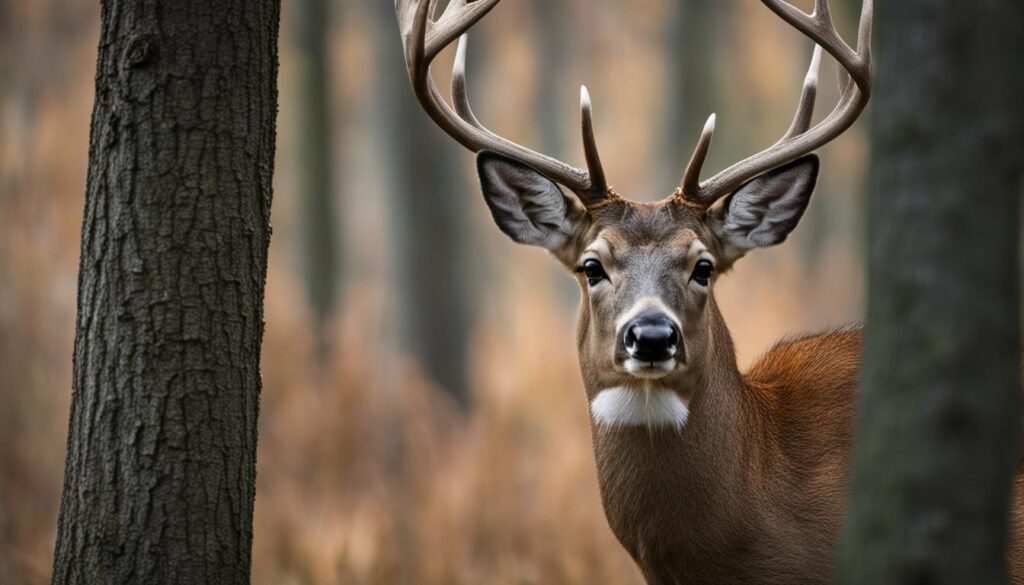
Deer also possess remarkable sensory abilities beyond their visual capabilities. Their sense of smell is highly evolved, with a multitude of receptor sites in their noses. This acute olfactory sense aids in detecting predators and finding food. Additionally, deer have exceptionally acute hearing, allowing them to perceive sounds that often go unnoticed by humans.
Overall, deer have evolved a combination of visual, olfactory, and auditory capabilities that enable them to navigate their surroundings and avoid potential threats. While their color perception may differ from humans, their sensory abilities compensate and contribute to their survival.
The Implications for Hunters
The knowledge of deer vision and sensory abilities has significant implications for hunters. Understanding that deer perceive colors differently and have reduced visual acuity can inform hunters’ clothing choices in terms of camouflage and visibility. The research suggests that bright colors like blaze orange may not be as easily detected by deer as lighter-colored fabrics.
“Bright colors like blaze orange may not be as easily detected by deer as lighter-colored fabrics.”
Additionally, hunters can take advantage of the deer’s limited depth perception and concentration of cone cells along the visual streak by positioning themselves at an elevated stand. This gives them a better chance of remaining undetected while hunting.
It is also important for hunters to consider the scent they emit, as deer have a highly developed sense of smell. Using scent-masking products and taking wind direction into account can increase the chances of a successful hunt.
Example strategies for deer hunting:
- Choose clothing in colors that blend with the natural environment.
- Opt for lighter-colored fabrics that may be less visible to deer.
- Position yourself at an elevated stand to take advantage of the deer’s limited depth perception.
- Use scent-masking products to minimize human odor.
- Consider wind direction to ensure your scent does not alert nearby deer.
To further illustrate the implications for hunters, refer to the table below showcasing the visibility of different colors to deer:
| Color | Visibility to Deer |
|---|---|
| Brown | Visible |
| Green | Visible |
| Blaze Orange | Less Visible |
| Light Gray | Less Visible |
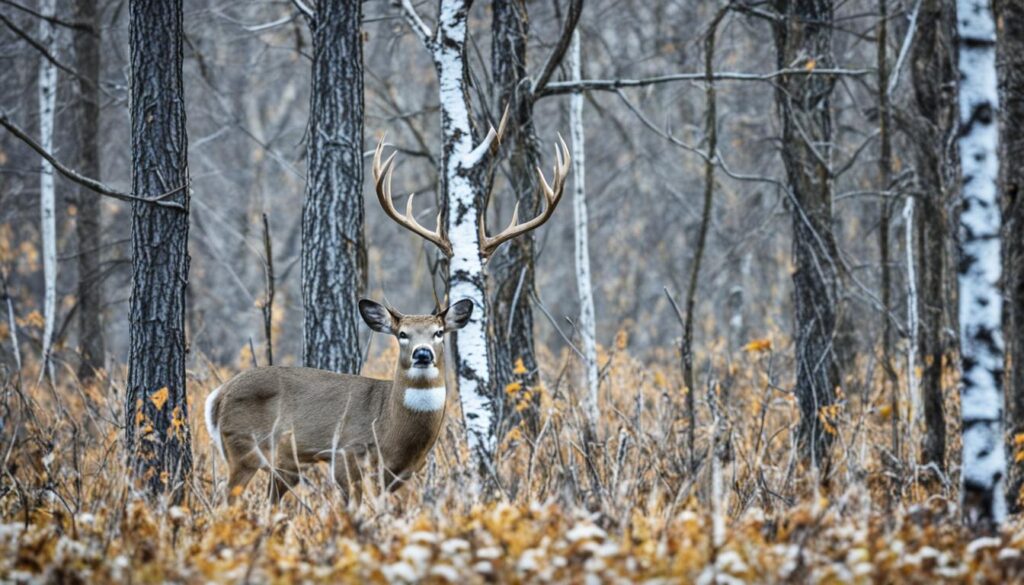
By implementing these strategies into their hunting techniques, hunters can increase their chances of a successful deer hunting experience.
Conclusion
In conclusion, contrary to popular belief, deer are not completely color blind. While their vision may differ from that of humans, they are still able to perceive certain hues and have unique visual capabilities. Research has shown that deer have “dichromatic” vision, meaning they have two types of cones in their eyes, as opposed to the three types that humans have. This difference in cone cells allows deer to see colors differently and have a reduced ability to distinguish between certain shades, such as red and green.
Deer’s sensory abilities, including their highly developed sense of smell and keen hearing, play a significant role in their ability to navigate their environment and detect potential threats. With hundreds of millions of receptor sites in their noses, deer can detect scents that would go unnoticed by humans. Their acute hearing allows them to pick up on sounds that might otherwise be missed. These sensory abilities, combined with their visual capabilities, give deer a remarkable advantage in their natural habitats.
For hunters, understanding deer vision and sensory abilities is crucial. This knowledge can inform their strategies and gear choices, leading to a more successful hunting experience. Hunters can select camouflage clothing that takes into account the way deer perceive colors and exploit their limited depth perception and concentration of cone cells along the visual streak by positioning themselves at elevated stands. Additionally, managing scent and wind direction can increase the likelihood of a successful hunt.
By delving into studies on deer vision, we gain a deeper appreciation for these majestic creatures and their remarkable adaptations. While their vision may differ from ours, deer have developed a unique set of visual and sensory abilities that allow them to thrive in their natural habitats. Understanding and respecting deer vision can contribute to a more ethical approach to hunting and a greater understanding of the intricate balance of nature.
- Wyoming Deer Season 2025-2026 New Schedule & Rules - 15 September 2025
- Wisconsin Deer Season 2025-2026: WI Deer Hunting Guide [Schedule, Rules, Licenses] - 15 September 2025
- West Virginia Deer Season 2025-2026 Complete Date & Guide - 15 September 2025
